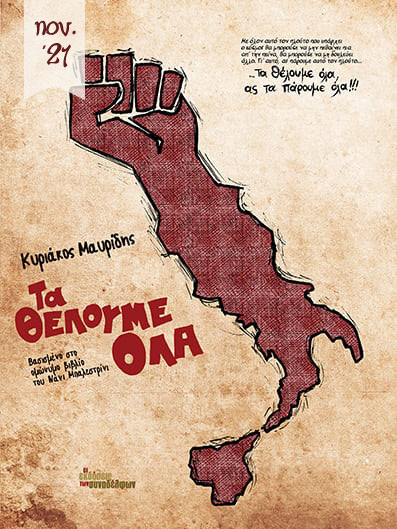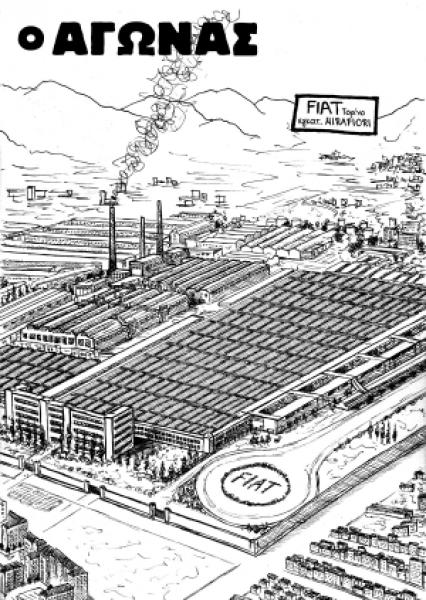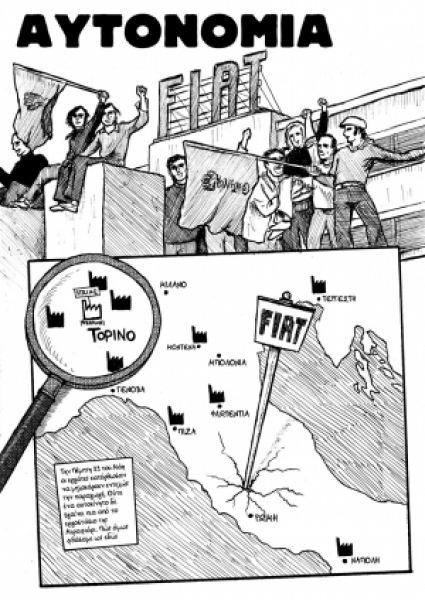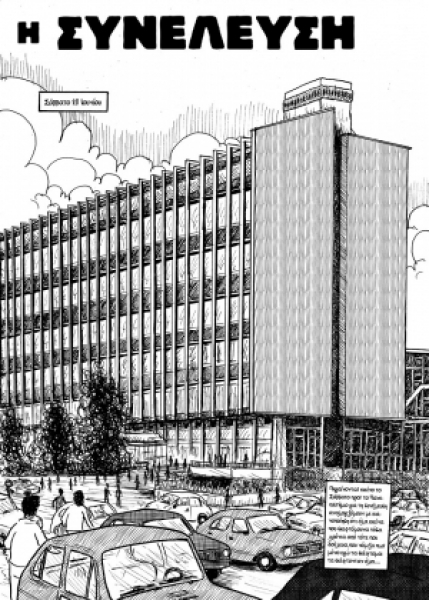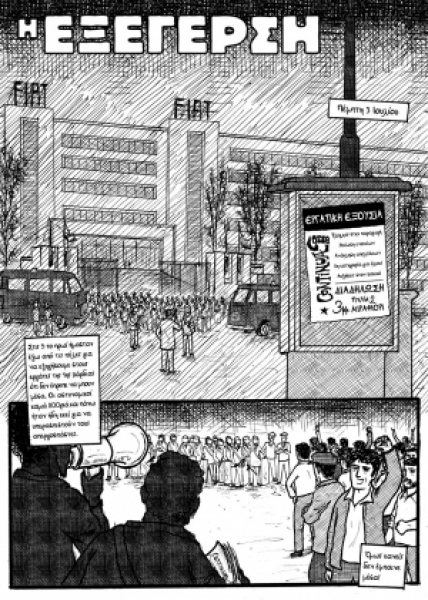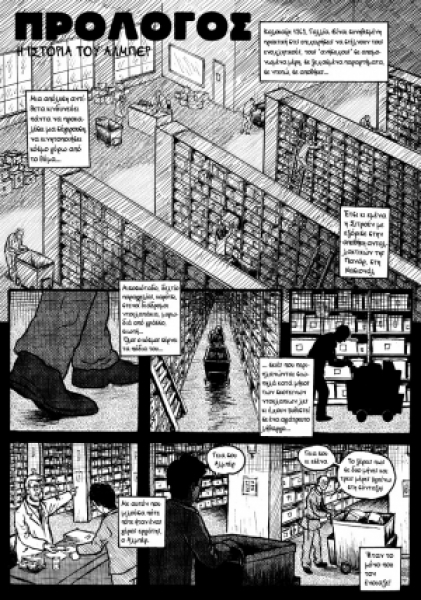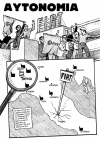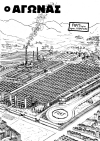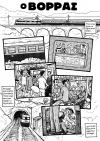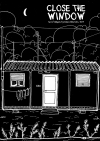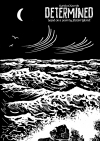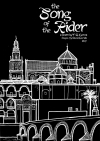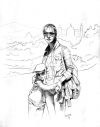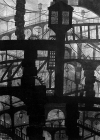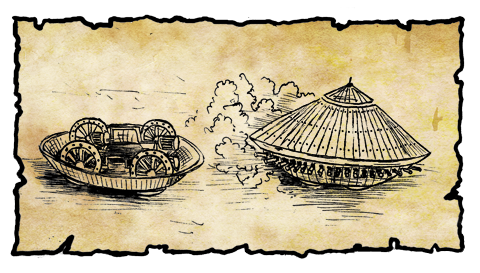
"My Lord,
you ask for my sketches as a friend
but you will use them
as a King"
from my new comic "Leonardo: The dream and the Nightmare" (temporary title)
Displaying items by tag: blacknwhite
AUTONOMY is the third chapter of the comic We Want Everything based on the book of the same name by Nanni Ballerini.
Beginning this chapter we briefly see the struggles and strikes all the previous days before that Thursday, 29 May (a day narrated in the previous chapter, THE STRUGGLE.) Then we find again our hero as he runs out of the factory and goes to the assembly in the cafe. What follows is a description of the situation in FIAT and the escalation of the struggles at the Mirafiori plant until the complete blockade of production (while spreading to almost all factories in Italy) just before the big assembly in the University and the events in the 3rd of July. (chapters THE WAGE, THE COMPANIONS and THE AUTONOMY in the book).
The main problem I encountered in this part is that much of the material in the book consists of a calendar format with records of each day's events or actions inside the factory. Keeping what I judged as most important, I chose to maintain the format of the diary only for the beginning (before May 29) and to give a form of comic panels for after 29, trying to make an escalation.
For this chapter, I have also used some stuff of two other books, "L' ETABLIE" by Linhart Robert, and "The Diary of a Renault Worker", by Daniel Mothe.
Next chapters will be "The Assembly" (same) and "The Rebellion" (also).
The Struggle is the second chapter of the comic We Want Everything based on the book of the same name by Nanni Ballerini (you can see the first chapter, the North, here).
In this chapter we watch the first days of the hero in FIAT, his fierce relationship with the hierarchy (foremen, managers and guards), the work in the chain and the first mobilization of the workers that led to a demonstration and strike (chapters FIAT and THE STRUGGLE in the book).
The main problem that I have encountered in this part must be my lack of knowledge of details of the "geography" of the Mirafiori plant, but also of the equipment and actual work in the chain during that period (1969). Perhaps some of the readers of the comic will feel that the hero's reactions are not fully justified by his treatment by the FIAT hierarchy. It is our huge distance from that period (temporal but mostly mental) and our igonarance about the actual working conditions in the chain of factories (the mental and physical fatigue of repetitive movements, the constant stress of time (and not "sinking" ending each piece at the next position of the chain), the pressure for procuctivity etc. It is a problem possibly that i will have during the whole comic -I've already thought of some solutions and I will try to see what fits best.
Next chapters will be "Autonomy" (Book: "The Wage", "The Companions" and "The Autonomy"), "The Assembly" (same) and "The Rebellion" (same).
"The North" is the first chapter of the comic "We want everything" based on the book of the same name by Nani Ballestrini. The comic does not follow the book literally: Here the first chapter does not correspond to the book's homonymous chapter, but it is a summary of the chapters "South" and "North" and acts as an informal prologue for the rest of the comic book. The reason is that from the very beginning I had decided to focus more on the FIAT events.
As far as the implementation, a major problem I had from the very beginning was my ignorance of the basic things that are mentioned in the book and concern Italy in 1969. For example, what clothes did they wear at that time? What hairstyles they had, what habits? Which train carried the thousands of domestic migrants from the Italian South, Sicily, Naples, Salerno to the Italian North? What was his course? How was his interior? How were the stations (and especially Porta Nuova in Turin) and so many others. I researched and collected a lot of material, mainly through the Internet, but also from films such as The Invisible (based on the next book of Balestrini and the defeat of the Autonomy movement), Radio Alice or The Labor Class goes to Paradise. However, the risk of having made some mistakes remains.
"The North" as I mentioned before is the first chapter of the comic book. The chapters "The Struggle" ("The Fiat" and "The Struggle" in the book), "Autonomy" ("The Wage", "The Companions" and "The Autonomy"), "The Assembly" (same) and "The Rebellion" (same) will follow.
The Determined is a comic based on a text by the poet Nazim Hikmet (translated by Peter Markaris). It is a poem titled 8-10-1945 written while the poet was in prison and was published in a collection titled "The poems of 9-10pm".
Similar with the other poems I have illustrated (Let us Describe, The Song of the Rider) I chose a course of meaning from the many that could arise from reading these texts. This was done without any intention of counterfeiting or limiting the range of
these poems. On the contrary, I would like these comic to be another reading proposal.
As for the illustration itself, my original intention was to digitize the sketches (and reverse the colors), as I did in the other two poems. However, because the result did not satisfy me, I finally kept it in only three pages, where it seemed to work.
Bosses and clients is a short story written in November of 2016 and completed as a comic in February 2017. Although autonomous it has been created so as to be part of a bigger collection of stories and with similar labor context.
Main character in these stories apart from the worker/employee (in this case the young man who works delivery) is the working conditions and problems faced by everyone in similar jobs.
In this story I wanted to criticise on one hand the attitude of the bosses (the owed salaries, the pressure, the threats / insults, the dismissals) and on the other the behavior of customers.
In modern society with the expansion of the services sector and promotion of a consumer culture, the role of the client is a role we all play in our lives -We are simultaneously customers and employees (often faced with other customers) and this creates a rivalry mentality. We don't feel solidarity for employees /workers serving us and we are indifferent to their problems -the only thing we want is to be served immediately. And yet when we are on the other side (that of the worker /employee) we face the same by other customers.
This comic is an interpretation of one of Federico Garcia Lorca's poems with the name Rider's song (or Horseman's song -Canción del jinete). The original poem is the following:
Córdoba. Lejana y sola.
Jaca negra, luna grande,
aceitunas en mi alforja.
Aunque sepa los caminos,
yo nunca llegaré a Córdoba.
Por el llano, por el viento,
jaca negra, luna roja.
La muerte me está mirando
desde las torres de Córdoba.
¡Ay que camino tan largo!
¡Ay mi jaca valerosa!
¡Ay que la muerte me espera,
antes de llegar a Córdoba!
Córdoba.
Lejana y sola.
This painting was made as a tribute to the work of Giovanni Battista Piranesi. It shares a lot with the other black and white paintings of 2016 (for example the tower). Here I used some 2d forms inspired by Piranesi's sketches and tried to create a composition. I created debth by decreasing size and opacity.
Unfortunately the photos (and the highlights on the black surfaces) do not do justice to the original work.
This is a series of illustrations i made for the book Universal History of Infamy (or A Universal History of Iniquity, original Spanish title: Historia universal de la infamia) a collection of short stories by Jorge Luis Borges, first published in 1935, and revised by the author in 1954. The nature of these short stories led to me to make these illustrations like portraits for each story's hero.
The style I used is heavily influenced by manga comics. I cannot explain exactly why, perhaps because the first story that I read and wanted to illustrate is the one of the widow Ching Shih (actually from this story I made two sketches, Ching Shih and Anne Bonny). Most of the characters (if not all of them) are real. Whenever I could find some real photos i used them as a reference (not always with accuracy). These persons are Monk Eastman (I kept his head shape and his hair), Billy the kid (I used his clothes and I was influenced for his jaw) and Tom Castro.
Anne Bonny is not a hero character of some story and she is only mentioned on a short paragraph in the widow Ching's story but i really liked her famous quote (there are plenty of sources on the net about it -here from wikipedia).
Now in Bookstores
We Want Everything
the publications of colleagues, Nov. 2021
Summer of 1969, Italy. A year after May '68, FIAT workers began a dynamic and unmediated strike against their powerful boss. Their struggle marked the beginning of a decade of workers' and students' mobilizations and the rise of the Autonomy movement. It was characterized by many as the last invasion of the working class into the sky. Last ... let's hope until the next one ...
